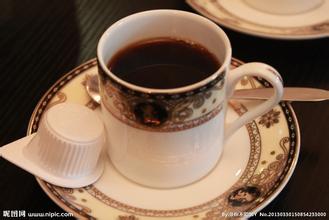The taste of Peruvian coffee is smooth and smooth. Introduction to the characteristics of fine coffee beans in the manor area.
The Andes runs from north to south, and the mountains account for 1% of the total area of the country. The whole territory is divided into three regions from west to east: the western coastal area is a long and narrow arid zone, a tropical desert region, with a dry and mild climate, a plain with intermittent distribution, developed irrigated agriculture and a concentrated urban population; the central mountain plateau is mainly the middle part of the Andes, with an average elevation of about 4300 meters, the birthplace of the Amazon River. The east is the Amazon tropical rain forest region, which belongs to the upper reaches of the Amazon River, foothills and alluvial plains, with high temperature and rain all the year round, forests and sparsely populated areas. it is a newly developed oil production area in Peru.
Mount Coropuna and Mount Salcan are both more than 6000 meters above sea level, while Mount Vascalan is 6768 meters above sea level, the highest point in Peru. The main rivers are the Ukayari River and the Putumayo River. The southern part of the central part is volcanic with frequent earthquakes, and Lake Titicaca, which is the second largest lake in South America, lies on the southeast border with Bolivia. The northern part of the center contains oil along the coast and offshore. Offshore waters are rich in fishery resources such as anchovy (Peruvian sardines), and there are a large number of guano layers in the coastal islands. The forest area accounts for 51% of the territorial area. [6]
Climate
The whole territory is divided into tropical desert, plateau and tropical rain forest climate from west to east. The western part of Peru has a tropical desert and grassland climate, dry and mild, with an annual average temperature of 12-32 ℃; the central part of Peru has a large temperature change, with an annual average temperature of 1-14 ℃; and the eastern part belongs to a tropical rain forest climate, with an annual average temperature of 24-35 ℃. The average temperature in the capital is 15: 25 ℃. The annual precipitation is less than 50 mm in the west, 200mm in the middle and more than 2000 mm in the east. [7]
Time zone
West Fifth District (UTC-5) is 5 hours later than GMT and 13 hours later than Beijing time.
Natural resources editor
It is rich in mining resources and is one of the top 12 mining countries in the world. There are mainly copper, lead, zinc, silver, iron and oil. The reserves of bismuth and vanadium rank first in the world, copper ranks third, silver and zinc fourth. The proved reserves are 400 million barrels of oil and 7.1 trillion cubic feet of natural gas. Forest coverage is 58%, with an area of 77.1 million hectares, second only to Brazil in South America. It is extremely rich in hydraulic and marine resources, rich in fishery resources, and the output of fishmeal is among the highest in the world. [8]
In 2009, Peru ranks first in silver production in the world, second in copper production, second in zinc production, third in tin production, and sixth in gold production. Peruvian coffee production is grown in a planned way, which greatly increases coffee production. Peruvian coffee has a mellow taste and proper acidity, and this lukewarm coffee attitude has made more and more people like it. Peruvian coffee has always been used as one of the stable mellow mixed beans of comprehensive coffee, and its rich acidity and mellow smoothness are its most prominent features. Peruvian coffee has a soft sour taste, medium texture, good taste and aroma, and is an indispensable ingredient in the production of comprehensive coffee. High-quality Peruvian coffee, with strong aroma, smooth, layered, rich sweet, elegant and mild sour taste, will quietly awaken your taste buds.
Peru
Peru is also a big coffee producer. Up to 98% of Peruvian coffee is grown in forest areas, and most producers are small farmers. Coffee is high-quality and balanced and can be used for mixed drinks.
Peru has good economic conditions and a stable political situation, thus ensuring the good quality of coffee. In the mid-1970s, Peruvian coffee production was about 900000 bags a year, and then steadily increased to about 1.3 million bags a year. Although private exporters buy coffee in remote areas through middlemen, the main market is still monopolized by the government. Later, the private Comera de Exportadores de Cafe del Peru was established, which is committed to improving the quality of coffee. Its primary task is to set standards and eliminate inferior products, so as to create an atmosphere of quality supremacy. This positive move heralds a bright future for the coffee industry. Since then, rising prices have encouraged farmers to actively grow coffee rather than cocoa, the region's traditional cash crop.
Peru's finest coffee is produced in Chaximayo, Cusco, Note and Puno. Most Peruvian coffee is grown under natural conditions, but it is also difficult to confirm the cultivation of all coffee trees. Coffee grown under natural conditions costs 10% more than others and is exported to the United States and Japan.
The quality of Peruvian coffee is comparable to that of any kind of coffee in Central or South America. In addition to some of the high-quality coffee produced in Peru is used for the production of instant coffee, most of it is shipped to Germany for processing mixed coffee, and then shipped to Japan and the United States. this also shows that the high quality Peruvian coffee is planted in a planned way, which greatly increases coffee production. Its rich acidity and mellow smoothness are its most prominent features. Peruvian coffee has a soft sour taste, medium texture, good taste and aroma, and is an indispensable ingredient in the production of comprehensive coffee. High-quality Peruvian coffee, with strong aroma, smooth, layered, rich sweet, elegant and mild sour taste, will quietly awaken your taste buds.
Compared with high-quality organic Peruvian coffee, the difference between ordinary organic Peruvian coffee and high-quality organic Peruvian coffee is huge: relatively cheap beans are not only poor in quality, but often have obvious defects in the cup. Especially the grass flavor, overfermented flavor. It takes a lot of work to find good Peruvian coffee beans among a lot of middlemen or other people who can buy them. However, it also takes a lot of hard work to pick sample beans. But that's better than working hard in piles of papers.

Important Notice :
前街咖啡 FrontStreet Coffee has moved to new addredd:
FrontStreet Coffee Address: 315,Donghua East Road,GuangZhou
Tel:020 38364473
- Prev

Rich and round Indonesian civet coffee flavor taste manor features boutique coffee beans introduction
In the coffee industry, Kopi Luwak is widely regarded as a product with novelty as the selling point. The American Special Coffee Association (Specialty Coffee Association of America,SCAA) says the industry consensus is that it tastes bad. SCAA quoted a coffee expert as saying: obviously, the selling point of Kopi Luwak is its story, not its quality. Adopt SCAA
- Next

Meticulous and smooth Cuban Crystal Coffee Flavor Flavor Manor characteristics of Fine Coffee beans
The area is 109884 square kilometers [3], of which Cuba is 104555.61 square kilometers and the surrounding islands and reefs are 3126.43 square kilometers. Cuba is located in the northwest of the Caribbean Sea, facing Haiti to the east, 140 kilometers to the south from Jamaica and 217 kilometers to the north from the top of the Florida Peninsula. Cuba is made up of more than 1600 islands, including Cuba and Youth Island (formerly Pine Island). It is the West Indies.
Related
- Detailed explanation of Jadeite planting Land in Panamanian Jadeite Manor introduction to the grading system of Jadeite competitive bidding, Red bid, Green bid and Rose Summer
- Story of Coffee planting in Brenka region of Costa Rica Stonehenge Manor anaerobic heavy honey treatment of flavor mouth
- What's on the barrel of Blue Mountain Coffee beans?
- Can American coffee also pull flowers? How to use hot American style to pull out a good-looking pattern?
- Can you make a cold extract with coffee beans? What is the right proportion for cold-extracted coffee formula?
- Indonesian PWN Gold Mandrine Coffee Origin Features Flavor How to Chong? Mandolin coffee is American.
- A brief introduction to the flavor characteristics of Brazilian yellow bourbon coffee beans
- What is the effect of different water quality on the flavor of cold-extracted coffee? What kind of water is best for brewing coffee?
- Why do you think of Rose Summer whenever you mention Panamanian coffee?
- Introduction to the characteristics of authentic blue mountain coffee bean producing areas? What is the CIB Coffee Authority in Jamaica?

